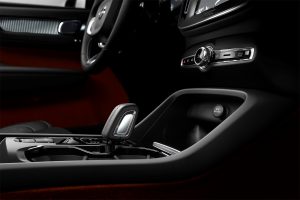The extraordinarily popular Volvo XC40 is now available in T3 guise, bringing even more variety to the 2018 European Car of the Year line-up.
The new powertrain is the first three-cylinder engine in the company’s 91-year history.
The all-new 1.5 litre T3, three-cylinder, direct-injection petrol engine was developed in-house using the same modular design as Volvo’s four-cylinder Drive-E engines. The three-cylinder powertrain comes with a six-speed manual transmission while an optional eight-speed transmission will follow at a later date.Furthermore, the new three-cylinder powertrain has been deliberately designed for integration into Twin Engine plug-in hybrid cars. A hybridised as well as a pure electric powertrain option for the XC40 will be added later.
Volvo’s four-cylinder Drive-E engines. The three-cylinder powertrain comes with a six-speed manual transmission while an optional eight-speed transmission will follow at a later date.Furthermore, the new three-cylinder powertrain has been deliberately designed for integration into Twin Engine plug-in hybrid cars. A hybridised as well as a pure electric powertrain option for the XC40 will be added later.
In South Africa, the XC40 T3 is now available in manual, with the T3 automatic due to follow later next year. With 115 kW and 265 Nm on tap, the XC40 T3 performs exceptionally well and delivers excellent fuel efficiency.
About the Volvo XC40
XC40 customers have plenty of choice in trim levels, including Momentum and R-Design, plus the luxurious new Inscription level. The Inscription trim offers exterior styling choices with 18”, 19” or 20” rims, unique skid plates, side window and grille mesh chrome, plus model-specific car colours. Inside, Inscription adds a newly designed crystal gear knob and the attractive Driftwood deco, which Volvo first introduced in its award-winning XC60 mid-size SUV.
The Inscription trim offers exterior styling choices with 18”, 19” or 20” rims, unique skid plates, side window and grille mesh chrome, plus model-specific car colours. Inside, Inscription adds a newly designed crystal gear knob and the attractive Driftwood deco, which Volvo first introduced in its award-winning XC60 mid-size SUV.
XC40 customers can further express themselves with accessories like the 21” Black Diamond Cut alloy wheels, and the new accessory styling kit that offers brushed stainless steel skid plates and integrated dual tailpipes.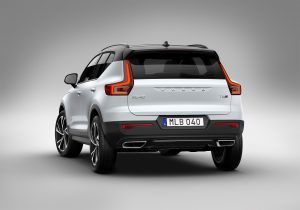 With the title of 2018 European Car of the Year already under its belt, Volvo’s XC40 is quickly turning into a volume seller in the South African market. With the addition of the T3 engine, customers now have even more options when choosing the XC40 that perfectly suits their needs.
With the title of 2018 European Car of the Year already under its belt, Volvo’s XC40 is quickly turning into a volume seller in the South African market. With the addition of the T3 engine, customers now have even more options when choosing the XC40 that perfectly suits their needs.
The new Volvo XC40 brings a breath of fresh Swedish air to the premium compact SUV segment, throwing away the rulebook to create a new motoring experience where individual style meets a functional and supremely minimalistic driving environment.
A new evolution of Volvo’s latest design language has resulted in an expressive and unique exterior, while a bespoke interior inherits all of Volvo’s latest design elements, including the revered 9-inch Sensus Connect touch screen and digital instrument cluster. New design elements like the optional contrasting white roof, white mirror caps and wheels, Oxide Red leather and ‘Lava’ carpets, which are made from 100% recycled materials, allows XC40 customers to express a more individualistic style.
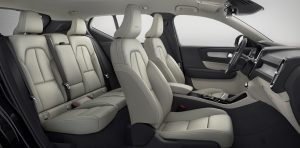
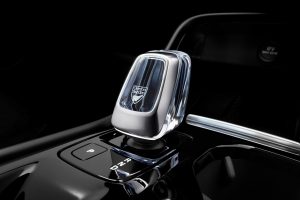
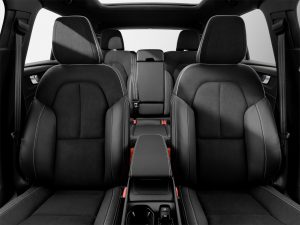
Functional practicality has also been a major focus on the inside of the XC40, where smart features like a removable rubbish bin, a cubby hole hook, a dedicated smartphone storage area with wireless (inductive) charging, and a multi-adaptable boot floor, transform a typically cluttered and sometimes messy car interior into a place of serenity and organised efficiency.
Volvo XC40 Pricing (including VAT, excluding C02 tax)
XC40 T3 Manual Momentum R 486 500
XC40 T3Manual lnscription R 518 200
XC40 T3 Manual R-Design R 525 300
XC40 D4 Geartronic AWD Momentum R 599 000
XC40 T5 Geartronic AWD Momentum R 605 300
XC40 D4 Geartronic AWD Inscription R 630 700
XC40 T5 Geartronic AWD Inscription R 637 000
XC40 D4 Geartronic AWD R-Design R 637 800
XC40 T5 Geartronic AWD R·Design R 644 100
Key Features Explained
CITY SAFETY WITH FRONT COLLISION WARNING AND FULL AUTOBRAKE
City Safety is included as standard in the new XC40. This system senses potential collisions, even when it is dark, and can activate the brakes automatically should you not react in time. City Safety provides three levels of intervention; warning, brake support and full autonomous braking, and uses a combination of instruments and sensors to constantly monitor surrounding conditions.
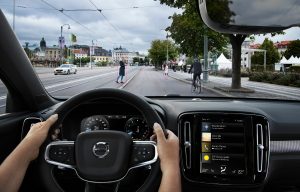
PEDESTRIAN, CYCLIST AND LARGE ANIMAL DETECTION
The ground-breaking Pedestrian, Cyclist and Large Animal Detection technology detects and automatically brakes the vehicle in the event of a pedestrian, cyclist or large animal (such as cattle) stepping/swerving/jumping out in front of the car. The advanced sensor system scans the area ahead and will prompt you to act with a flashing warning light, along with an audible alarm. If you do not react to the warning, and a collision is imminent, the car immediately brakes with full braking force.
REAR COLLISION WARNING WITH BRAKING AT STANDSTILL
Rearward facing radar detects if a rear impact is imminent, and safety belts are tightened in advance in order to protect the occupants. Lights also start flashing to warn the driver behind and brakes are activated to help reduce the impact movement.
 LANE KEEPING AID
LANE KEEPING AID
Lane Keeping Aid is a standard-fitted system that helps the driver keep the car in its lane by gently steering the car back if it is about to cross a lane marking, and if the car senses that the driver is not driving actively, or for example, not using their indicators. If the supplied steering intervention is insufficient the driver is alerted by vibrations in the steering wheel. The system is active between 65-200 km/h.
ROAD SIGN INFORMATION SYSTEM
The new XC40 can also help you stay informed by displaying real-world road sign information within your instrument display. This function also has the ability to warn the driver should the vehicle exceed the current road speed limit.
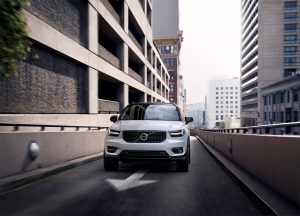 PILOT ASSIST
PILOT ASSIST
Optionally available, is Volvo’s next generation of semi-autonomous technology. The Adaptive Cruise Control feature maintains the desired set vehicle speed but utilises radar to monitor the vehicle in front and automatically slows down or speeds up as necessary. In an evolution of this, Pilot Assist also takes care of the steering (up to 130 km/h and when lane markings are clearly visible) by continually monitoring the area in front of the vehicle, making the necessary steering, accelerator and brake inputs as required to keep to the desired speed, distance and within the lane markings.
BLIND SPOT INFORMATION SYSTEM WITH CROSS TRAFFIC ALERT
The Blind Spot Information System uses sensors to alert the driver to vehicles within the mirror blind spots, on either side of the vehicle. Cross Traffic Alert uses radar to provide information to the driver about vehicles approaching from the side – for example when reversing out of a parking space. New in the XC40, Cross Traffic Alert now also includes braking support, which allows the car to brake on its own if an impact from either side is imminent.
 PARK ASSIST PILOT
PARK ASSIST PILOT
This function allows the car to take over steering control in difficult parallel or perpendicular parking spots. The driver is prompted to control the throttle, braking and gear inputs. The “park out” function also assists in exiting tighter spots.
VISUAL PARK ASSIST 360º CAMERAS
During low speed manoeuvres, the Visual Park Assist 360º Cameras provide the driver with additional information relating to the car’s surroundings. A birds-eye view of the car is provided via four hidden cameras, digitally stitched together to create a seamless image on the centre screen.
RUN-OFF ROAD MITIGATION AND RUN-OFF ROAD PROTECTION
Run-off road accidents are amongst the largest cause of single vehicle accidents. To combat this, Volvo Cars has developed two support systems aimed at helping to avoid a run-off road accident from taking place, or protecting the car’s occupants in the case of an unavoidable road departure.
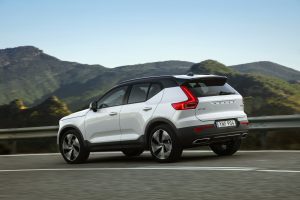

The Run-off Road Mitigation function is designed to help prevent unintentional road departures at vehicle speeds between 65-140 km/h. Run-off Road Protection focuses on accidental road departure. Using input from the car’s advanced sensor system, the technology is able to detect a run off road scenario.
DRIVER ALERT CONTROL
Distraction, lack of concentration, and falling asleep are major reasons for accidents. In 2007 Volvo Cars introduced a world-first technology to combat this danger. Driver Alert Control keeps track of the car’s path in relation to lane markings on either side, by means of the camera in the windscreen. If the system detects that the car is being driven in an erratic manner the driver gets an alert in the form of an audible signal as well as a text message and a coffee cup symbol in the driver display, that indicate it is time to take a break. With Sensus Navigation, the driver also gets guidance to the next available place to take the break.
